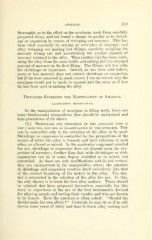Page 651 - My FlipBook
P. 651
AMALGAM. 319
thoroughly as to the effect on the amalgam, made from carefully
prepared alloys, and not found a change in quality as to shrink-
age or expansion by reason of wringing out mercury. This has
been tried especially by mixing an over-plus of mercury, and
after wringing out making test fillings, carefully weighing the
mercury wrung out and ascertaining the precise amount of
mercury retained in the alloy. Then another mix has been made,
using the alloy from the same bottle and adding just the retained
amount of mercury in the first filling. The fillings will test alike
for shrinkage or expansion. Indeed, as has been said before,
more or less mercury does not control shrinkage or expansion,
but if tin were removed in much excess, I see no reason why the
amalgam would not be made to expand just the same as if less
tin had been used in making the alloy.
Pbinciples Goveening the Manipulation of Amalgam,
illustrations: figures 408-410.
In the manipulation of amalgam in filling teeth, there are
some fundamental propositions that should be understood and
take precedence of all others.
(1.) Shrinkage and expansion of the amalgam used is
NOT under the control of manipulation by the operator. This
can be controlled only in the selection of the alloy to be used.
Shrinkage or expansion is controlled by the proportions of the
metals of which the alloy is formed, and their relations to each
other, as alloyed or mixed. In the particular compound selected
for use, shrinkage or expansion does not depend upon the pro-
portion of mercury ; further than that, wide shrinkages or wide
expansions can be in some degree modified as to extent, not
controlled. As these are only modifications and do not control,
they are unimportant in the manipulative sense; the question
of shrinkage and expansion resolves itself exclusively into that
of the correct balancing of the metals in the alloy. The den-
tist is interested in the selection of the alloy for use. In this,
the only chance is to trust the best alloy makers. Those should
be selected that have prepared themselves especially for this
work by experience in the use of the best instruments devised
for alloying metals and testing their results, and who are known
to be honest. Here the question is often asked: "Should the
dentist make his own alloys ? ' ' Certainly he may do so if he will
devote some years of study and time to learn alloy making and


